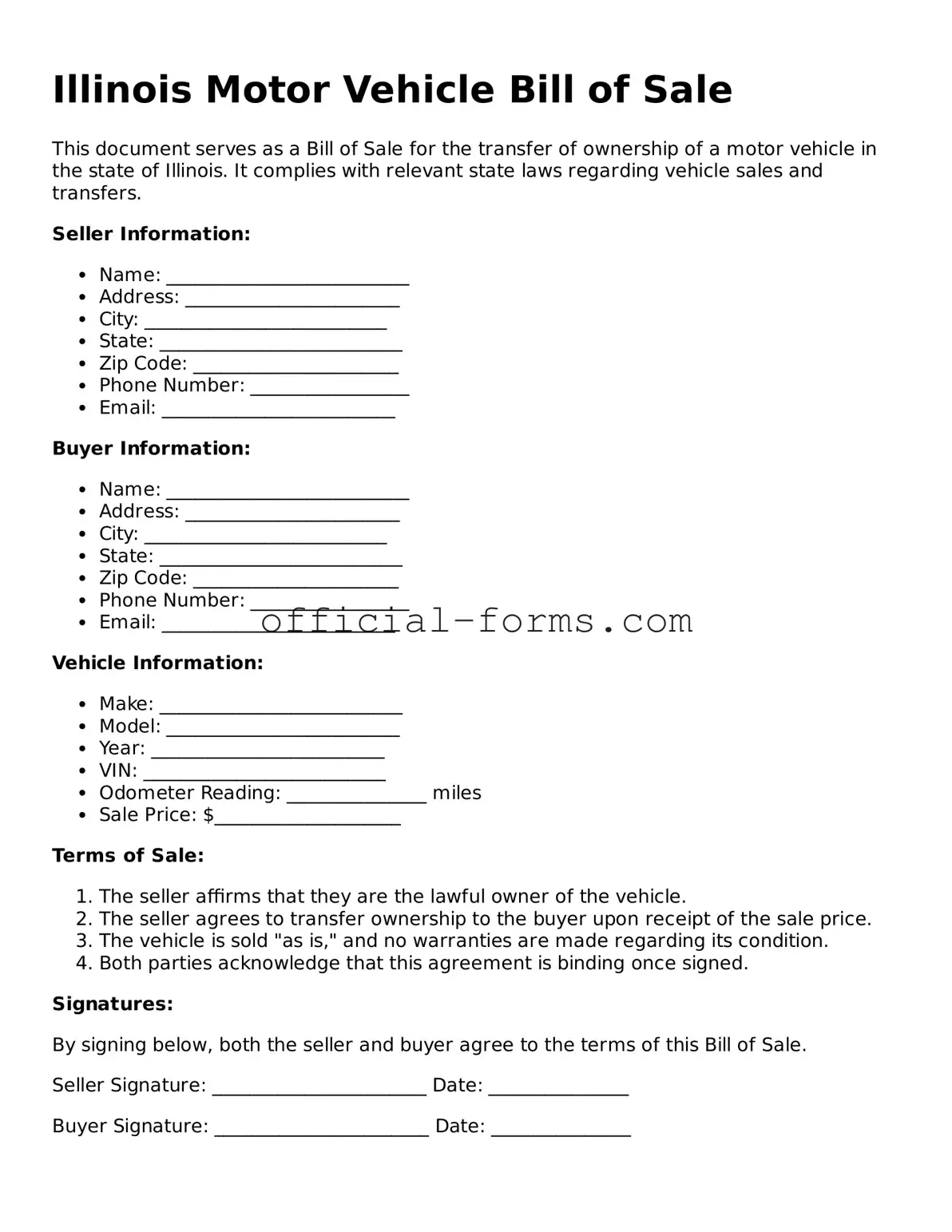Filling out the Illinois Motor Vehicle Bill of Sale form can be straightforward, but several common mistakes can lead to complications. One frequent error is failing to include all necessary details about the vehicle. This includes the Vehicle Identification Number (VIN), make, model, and year. Omitting any of this information can create confusion and may delay the transfer of ownership.
Another common mistake is not providing accurate information about the seller and buyer. It's essential to include full names, addresses, and signatures of both parties. If any of this information is missing or incorrect, it could invalidate the bill of sale.
People often overlook the importance of the sale price. Leaving this section blank or entering an incorrect amount can lead to issues with tax assessments. Always ensure that the sale price is clearly stated to avoid future disputes.
Not dating the document is another mistake that can cause problems. The date of sale is crucial for record-keeping and legal purposes. Without a date, it may be unclear when the transfer of ownership occurred.
Some individuals forget to check for any liens on the vehicle. If a lien exists, it must be disclosed in the bill of sale. Failing to do so can lead to legal complications for the buyer.
Another issue arises when people do not provide a clear description of the vehicle's condition. Including details about any existing damage or mechanical issues helps protect both the buyer and seller. This transparency can prevent misunderstandings later on.
Not keeping a copy of the bill of sale is a mistake that many make. Both parties should retain a signed copy for their records. This document serves as proof of the transaction and can be useful in case of disputes.
Some may forget to include the odometer reading at the time of sale. This information is important for tracking the vehicle's history and can affect its value. Be sure to record the odometer reading accurately.
Lastly, people sometimes rush through the process without reading the entire form carefully. Taking the time to review the completed bill of sale can help catch any errors or omissions before finalizing the transaction.
By avoiding these common mistakes, individuals can ensure a smoother transaction when completing the Illinois Motor Vehicle Bill of Sale form.
